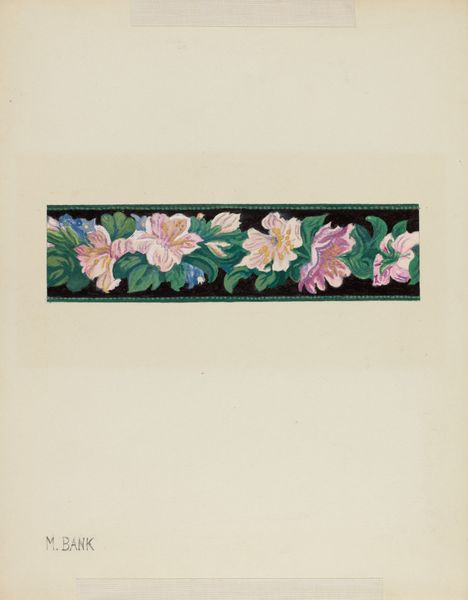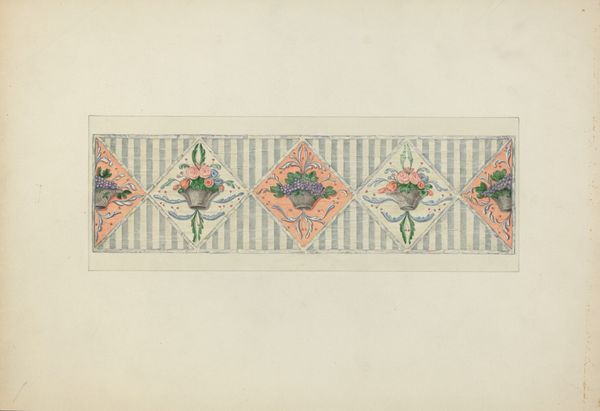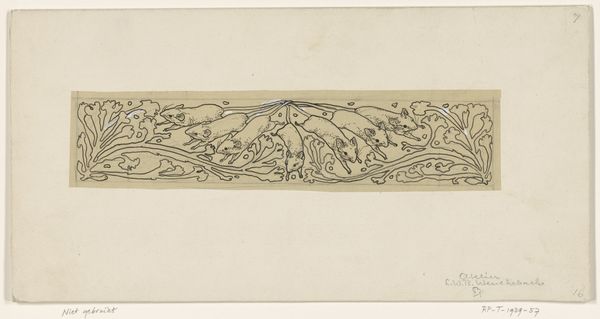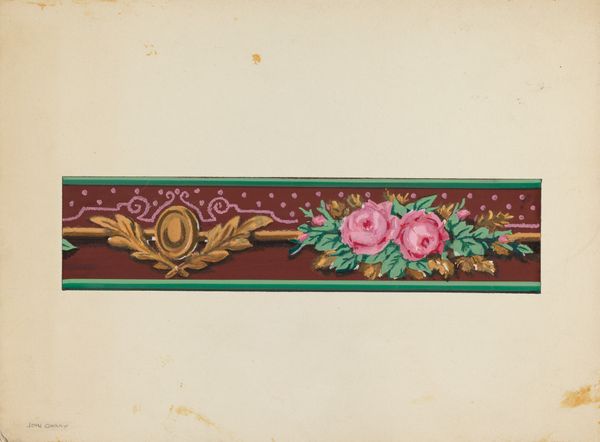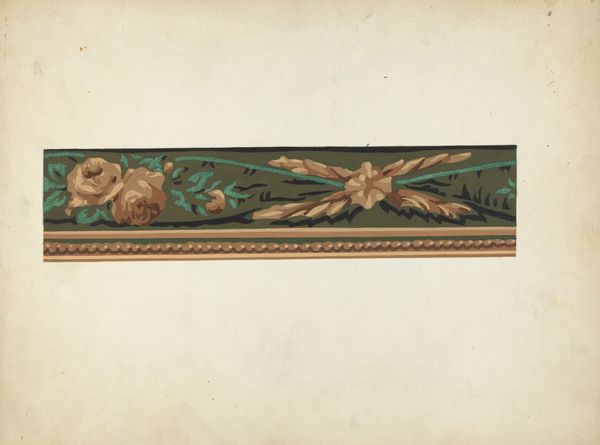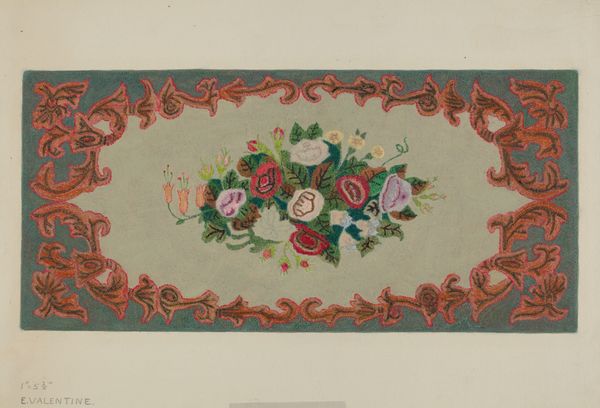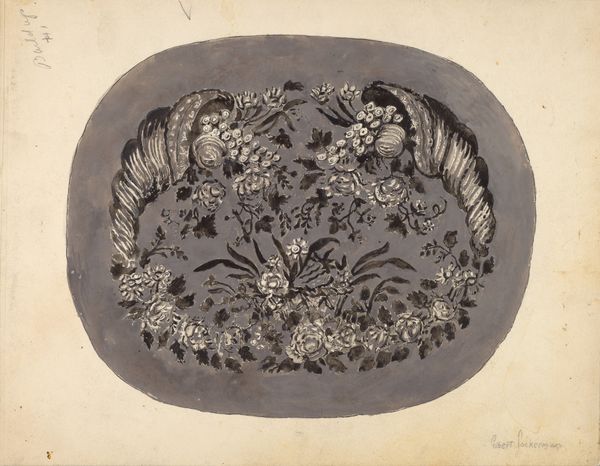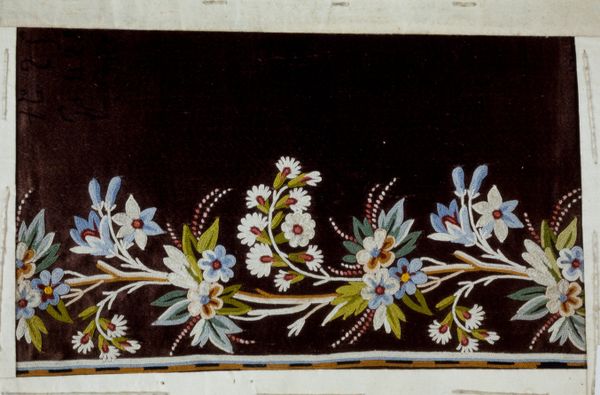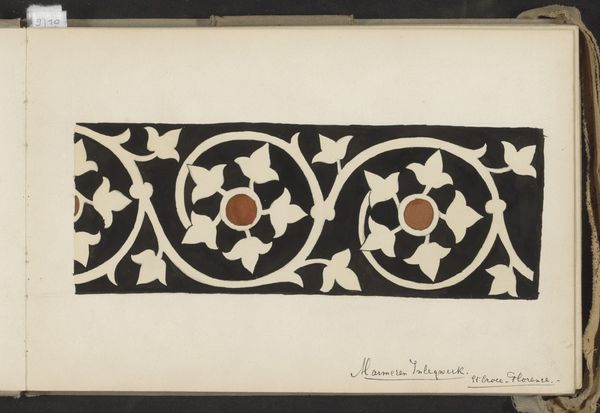
drawing, gouache, paper, watercolor
drawing
water colours
gouache
paper
watercolor
decorative-art
watercolor
Dimensions: overall: 22.8 x 29 cm (9 x 11 7/16 in.) Original IAD Object: 3 1/4" wide
Copyright: National Gallery of Art: CC0 1.0
Editor: So, we’re looking at “Wall Paper Border,” a watercolor and pencil drawing on paper created in 1936 by Nicholas Acampora. It feels like a design sample. I'm curious – what strikes you about this piece in relation to its historical context? Curator: It’s a seemingly simple decorative piece, but considering its time, we have to see it within a specific social lens. The 1930s was a period of both economic hardship and aspiration. Something like this wall paper border speaks to the democratizing force of design and mass production, right? These floral designs suggest a longing for beauty accessible to ordinary households, even when budgets were tight. What do you think it communicates about middle class values during the Great Depression? Editor: I see that, it's interesting to consider decorative arts not as mere frills, but signifiers of resilience. The accessible beauty idea resonates with me, but also this controlled, almost rigid composition—the repetitive floral pattern. Could that be about control during unstable times? Curator: Precisely! The repetition of pattern offers visual comfort. Pattern and Decoration became its own defined movement later, but the roots of accessibility are clearly here in Acampora's work. Also, think about gender. In what ways was the decoration of a domestic space a part of the societal roles dictated to women? Editor: Ah, it was definitely a heavily gendered role! Making the home beautiful often fell on women's shoulders. I never considered it like that. It highlights that even domestic spaces held significant socio-political weight. Curator: Absolutely. This seemingly modest design speaks volumes about societal pressures, economic conditions and the democratizing function of art itself. Editor: I’ll never look at wallpaper the same way again! Curator: Me neither! It highlights the fact that museums have social power. Every choice about how to represent history has important implications for contemporary society.
Comments
No comments
Be the first to comment and join the conversation on the ultimate creative platform.
